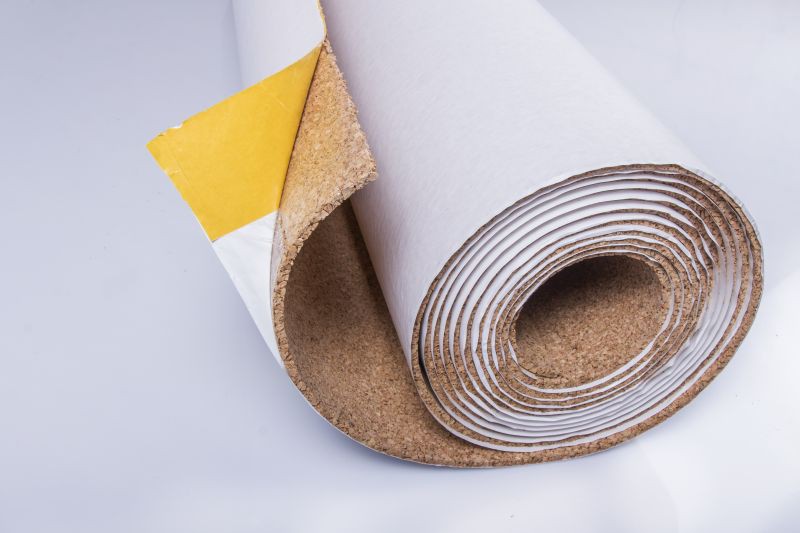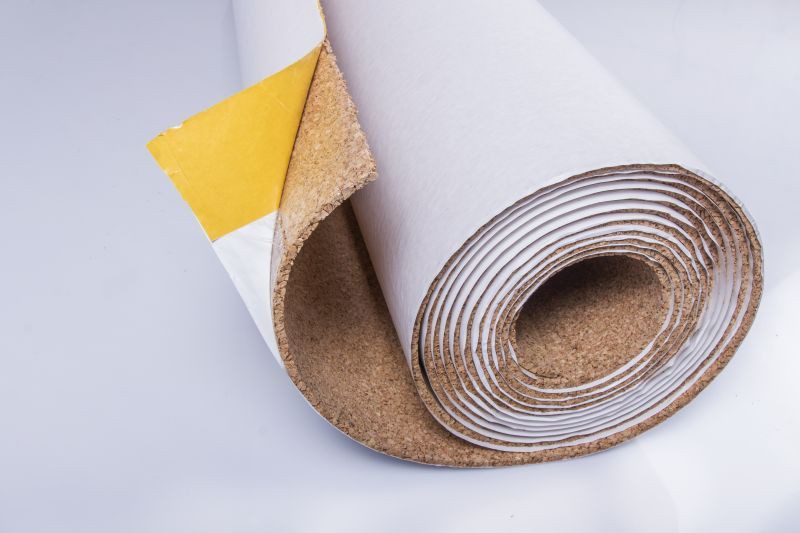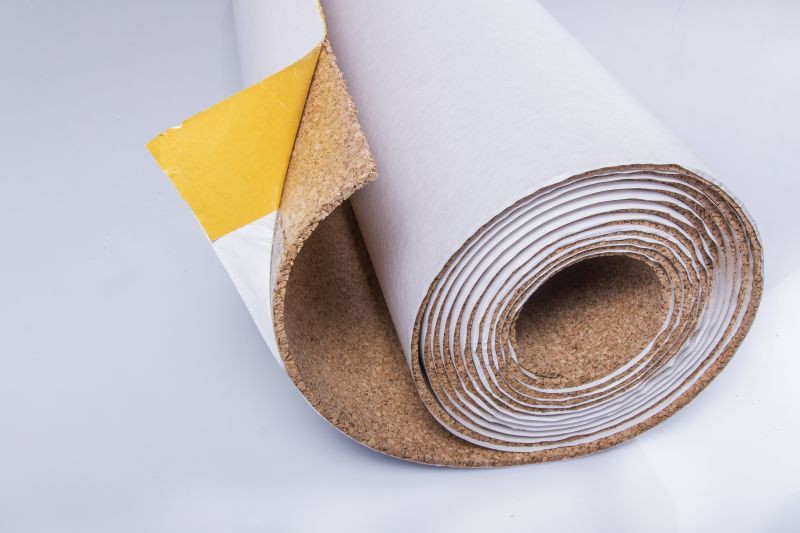Self-adhesive cork rolls
We offer self-adhesive cork rolls which are 1 m. (approx. 3 ft 3.37 in) wide. The product is available in medium granulation.
Self-adhesive cork roll is exceptionally easy to install as compared with traditional cork rolls. All you have to do is to remove foil from the product and stick the latter to a given surface.
One side of the cork is covered with a layer of glue that is additionally secured with a protective foil. To install the cork, you have to remove the foil and stick the product to a chosen surface. The glue is odourless and sticks to the surface immediately.
These rolls are used to make cork boards and branded & promotional pads. They are also used in automotive and furniture industries.
Showing all 7 results
What is a self-adhesive cork?
Self-adhesive cork is a cork material with a built-in adhesive backing.
This type of cork is pre-coated with an adhesive substance, usually on one side, which allows it to be easily attached to a variety of surfaces without the need for additional adhesives or adhesives. The self-adhesive backing simplifies the installation process and makes it a convenient choice for a variety of applications.
Here are some key features and uses of self-adhesive cork:
Key Features:
Self-Adhesive Cork: A sheet or roll of cork has a sticky side that can be peeled off to expose a layer of adhesive, allowing it to stick to surfaces.
Easy Installation: Self-adhesive cork is user-friendly and can be easily applied to walls, decking or other surfaces without the need for additional tools or adhesives.
Versatility: It comes in various forms such as sheets, rolls, and even tiles, making it versatile for a variety of applications.
Customizable: Can often be cut to fit specific shapes or sizes, providing flexibility in design and use.
What is a self-adhesive cork used for:
Cork boards: Adhesive cork is commonly used to create cork boards or bulletin boards. Users can easily attach it to a wall or backing board to create a functional and customizable space for pinning notes, photos, or other items.
Craft Projects: It is popular in various DIY projects and crafts. The self-adhesive backing simplifies the process of incorporating cork into creative projects such as making coasters or other decorative items.
Home Decor: Adhesive cork can be applied to surfaces such as cabinets, drawers or furniture to add a decorative and functional element. It can also be used to create a cork surface for organizing items.
Office use: Perfect for creating organizational spaces in offices, creating project boards or functional areas for notes and reminders.
Educational Settings: Suitable for educational environments such as classrooms or study spaces where pinning and displaying materials is necessary.
Interior Design: Used in interior design to create accent walls, decorative panels or other design elements that incorporate the natural look and texture of cork.
Self-adhesive cork is a convenient solution for individuals and companies who want to incorporate cork into their projects without the need to use additional adhesives. It combines the natural properties of cork with ease of installation, making it a practical choice for a variety of applications.
Easy installation of the self-adhesive cork.
Installing the self-adhesive plug is relatively simple and user-friendly.
Required materials:
Self-adhesive cork rolls or sheets
Utility knife (to trim if necessary)
Tape measure or ruler
The surface to which the cork should be applied (wall, board, etc.)
Steps:
Prepare the surface:
Make sure that the surface on which you plan to apply the self-adhesive cork is clean, dry and smooth. Remove all dust, dirt and debris.
Measure and cut:
Measure the area where you want to install the cork and use a tape measure or ruler to determine the appropriate size of the cork sheet or roll. If necessary, use a knife to cut the cork to the desired dimensions.
Peel off the backing layer:
Remove the protective layer from the adhesive side of the cork. The self-adhesive backing is usually covered with a removable film or paper.
Align and apply:
Carefully adjust the cork to the desired location on the surface. Start at one edge and press the adhesive side onto the surface, smoothing out any bubbles or wrinkles. Work on the entire surface.
Smooth out air bubbles:
If air bubbles appear during application, smooth them out with your hand or a flat tool towards the edges. This helps ensure good grip.
Secure the edges:
Pay special attention to the edges of the cork to make sure they are securely attached. If necessary, press the edges with a little more force to increase adhesion.
Trim excess (if necessary):
If excess cork is protruding from the edge, use a sharp knife to trim to a clean finish.
Allow adhesion:
Give the adhesive cork some time to adhere well. Follow manufacturer’s specific instructions regarding curing or setting time.
Tips:
Work slowly and carefully, especially when initially placing the plug.
If you need to reposition the plug, do so carefully to avoid damaging the adhesive.
Applying the cork to the surface with even pressure helps ensure a smooth and secure grip.
Please remember that ease of installation is one of the advantages of self-adhesive cork.
Advantages of self-adhesive cork
Adhesive cork has several advantages that make it a popular choice for a variety of applications. Here are some key benefits of self-adhesive cork:
1. Ease of installation:
User-friendly: Self-adhesive cork simplifies the installation process by making it easy to apply the cork to surfaces without the need for additional glue.
2. Versatility:
Various Forms: Available in sheets, rolls, tiles or other forms, providing flexibility for a variety of applications and design preferences.
3. Personalization:
Trimming Options: Can be easily cut to specific shapes or sizes, allowing you to adapt to your specific design needs.
4. No additional adhesives:
Convenience: Eliminates the need for additional adhesives or adhesives, saving time and effort during the installation process.
5. Time efficiency:
Fast Application: The self-adhesive backing allows for quick and efficient application, making it suitable for projects with tight deadlines.
6. Natural look and feel:
Aesthetics: Preserves the natural appearance and texture of cork,
7. Functionality:
Pin-friendly: Provides a pin-friendly surface, making it suitable for use as bulletin boards for pinning notes, photos and other items.
8. Sound absorption:
Acoustic properties: Cork naturally absorbs sound, contributing to better room acoustics when applied to walls or surfaces.
9. Lightweight:
Easy to Handle: The cork is naturally lightweight, making it easy to handle during installation
10. Adhesion strength:
Secure Attachment: Self-adhesive backing ensures strong and secure attachment to a variety of surfaces, ensuring durability over time.
11. DIY Friendly:
Craft and DIY Projects: Suitable for a wide range of DIY and craft projects, providing individuals with the opportunity to use cork in creative endeavors.
12. Eco-friendly:
Sustainability: Cork is a natural and renewable material that contributes to environmentally friendly solutions. Additionally, the self-adhesive backing is designed to be environmentally friendly.
13. Universal use:
Various Applications: Suitable for use in homes, offices, schools and commercial spaces, providing versatility in a variety of settings.
14. No App Mess:
Clean Installation: Eliminates the mess often associated with traditional adhesives, making the installation process cleaner and more convenient.
15. Durable Finish:
Longevity: When applied correctly, self-adhesive cap can provide a durable finish that can withstand everyday use.
The benefits of self-adhesive cork make it a practical choice for individuals and businesses looking for a convenient and versatile solution for a variety of projects and applications.







